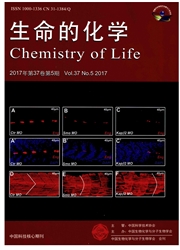
欢迎您!东篱公司
退出

 中文摘要:
中文摘要:
基因原位修复是指一种利用细胞的自身修复机制,定点修复靶基因中突变碱基的策略。目前,基因原位修复在大肠杆菌、酵母菌、哺乳动物细胞甚至动植物模型都有许多成功例子的报道。近年来,该技术在阐明其机制及提高其修复效率等方面取得了一些进展,但仍然面临着一些挑战,需要更深入地了解其潜力及局限性,使之成为治疗许多遗传性疾病的一种有效的方法。
 英文摘要:
英文摘要:
In-situ gene repair is a strategy which uses cells' own repair machinery to repair, or to make the target gene mutations. So far, there are many successful cases reported in E.coli, yeast, mammalian cells, and even in animal and plant models. In recent years, there are some progresses in elucidating its mechanism and in how to enhance the repair efficiency. However, in-situ gene repair is still facing some challenges before being used in clinical trials, which will be discussed herein also.
 同期刊论文项目
同期刊论文项目
 同项目期刊论文
同项目期刊论文
 期刊信息
期刊信息
